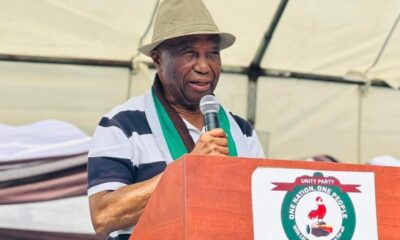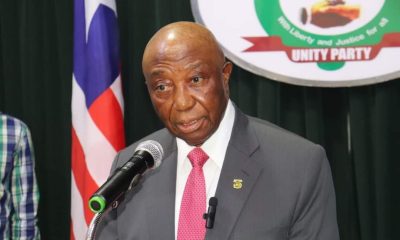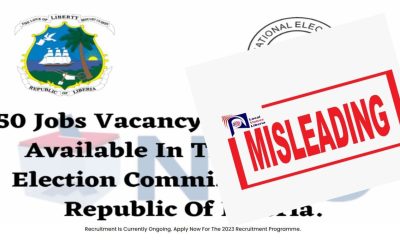Claim
Access to Electricity in Urban Areas 10 years Ago was around 7,8 to 10% Today We’re Around 43%.
Rating Justification
___________________________________________________________________________________________
Report By: Varney Kelvin Sirleaf | LVL Fact Checker
___________________________________________________________________________________________
Local Voices Liberia iVerify team research the claim made by the Minister of Finance and Development Planning, Mr. Samuel D. Tweah, Jr, on the Monday edition of a live radio program on Freedom FM that 10 years ago access to electricity was around 7, 8 to 10%, adding that [in Liberia] today “we are around 43%, of urban population that has access to electricity”. We found this statement to be incorrect.
To arrived at this conclusion, we began first by defining the term “Access to Electricity” which according to the World Bank is the percentage of the population that have access to electricity.
We also reviewed the World Bank’s data on Liberia’s urban population access to electricity 10 years ago. According to the World Bank Data, in 2013 (10 years ago) urban population access to electricity was at 16.4% and not 7, 8 – 10% as claimed by Minister Tweah.
The Bank’s most recent publicly available data on urban population access to electricity in Liberia stands at 49.5% in 2021.
In search of recent data of urban population access to electricity in Liberia, we contacted the Liberia Electricity Regulatory Commission, via email and they replied referring us to LISGIS on grounds that they don’t have data on the situation But since the announcement of the 2022 preliminary census result, LISGIS is yet to release the full census result comprising several other data including access to electricity for urban and rural population in Liberia.

Screenshot of email response from the LERC
We also Contacted the Ministry of Mines and Energy through Email and Facebook, they replied us through their Facebook page with a link to a report of Liberia country data done by Sustainable Energy for All — a website managed by the African Development Bank. The site contains report on access to electricity in Liberia for both urban and rural population from 2010 to 2016.
According to the data, 10 years ago Liberia urban population access to electricity was at 15% and 34% in 2016.

Source: World Bank
Our research also found an article published on December 13, 2022 by Power Africa, a U.S. Government-led partnership that seeks to increase electricity connection in sub-Saharan Africa by 2030. Though the Power Africa article did not have specific data on urban population access to electricity in Liberia, it did relied on the World Bank 2020 data to states that a little over 27% of Liberia’s population had access to electricity.
Based on these facts explained above, we conclude that the claim made by Finance and Development Planning Minister Samuel D. Tweah, Jr. on a live radio interview in Monrovia that “10 years ago, access to electricity in urban area was around 7, 8 to 10% and that now we are around 43%” is incorrect.
Access to electricity in urban area 10 years ago was at 16.4% and the World Bank most recent data shows that current statistics stands at 49.5% of urban population that has access to electricity in Liberia.
Evidence and References
________________________________________________________________________________________
Local Voices Liberia, in partnership with the United Nations Development Programme, has implemented the iVerify Liberia system with the objective of strengthening capacities to address threats to information integrity, especially in view of the upcoming 2023 elections, to ensure all Liberian citizens have access to credible, reliable and verified information, everywhere and at all times.
This initiative is funded by Irish Aid, Embassy of Sweden in Monrovia, European Union Delegation in Liberia and the United Nations Peacebuilding Fund. The donors have no say in the production of this fact check report.













































































































































































































































































































































































































































































































































































































